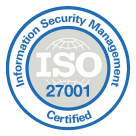Your team has countless customer conversations every day. But how many of the critical insights, recurring complaints, or sales opportunities hidden within those calls are actually captured? Manually reviewing calls is a losing battle, leaving teams flying blind.
This is the core challenge that modern AI call summary solutions are built to solve. These tools don’t just record calls; they intelligently analyze them to provide automated call summaries with key topic tagging, transforming chaotic conversations into structured, actionable intelligence.
This guide explores the leading call summary software with topic detection that is redefining post-call analysis. We’ve reviewed the market to show you which platforms deliver the clarity and efficiency your business needs.
TL;DR Summary
Cut through the noise of call reviews. The best AI call summarization tools automatically transform conversations into concise summaries and tag key topics like “billing issue” or “demo request.”
Top solutions like CloudTalk, RingCentral, and Zoom Phone handle this seamlessly. They help teams save hours on manual notes, improve agent productivity, and capture actionable insights from every customer interaction.
The key is choosing a tool that integrates directly with your workflow, turning call analysis from a chore into a strategic advantage.

AI Voice Agents
Sales Reminder
Agent
Client
Sales / Marketing
Course Inquiry
Agent
Client
Education / EdTech
Payment Reminder
Agent
Client
Financial Services
Healthcare Intake
Agent
Client
Healthcare
Insurance Intake
Agent
Client
Insurance
T&C Acceptance
Agent
Client
Legal Services
Legal Intake
Agent
Client
Legal Services
Candidate Feedback
Agent
Client
Recruitment / HR
Applicant Pre-screen
Agent
Client
Recruitment / HR
Action Reminder
Agent
Client
SaaS / Software & Apps
Subscription Renewal
Agent
Client
SaaS / Software & Apps
CX Feedback
Agent
Client
SaaS / Software & Apps
Post-Sales Feedback
Agent
Client
SaaS / Software & Apps
Trial Signup
Qualifier
Client
SaaS / Software & Apps
What Are AI Call Summarization Tools and Why They Are Important
In simple terms, AI call summarization tools are software that use artificial intelligence to automatically convert spoken conversations into concise, written summaries. But they go a step further than just transcription. They analyze the dialogue to identify and tag the key topics discussed, answering the critical question: can AI capture and organize key call insights? The answer is a definitive yes.
Think of it as having a super-efficient assistant on every call. This assistant doesn’t just take notes; it highlights the main points, flags important discussion topics like “pricing question” or “technical support,” and delivers a structured report the moment the call ends.
This matters because it fundamentally changes how businesses leverage their customer conversations. Instead of relying on spotty, after-the-fact notes, teams get immediate, objective insights. This is the core value of call intelligence software with topic categorization—it turns every customer interaction into a searchable, analyzable data point that can drive coaching, improve customer experience, and reveal larger business trends.
Best AI Call Summarization Solutions for Business: Complete breakdown for 2025
You’re here for one reason: to find software that offers automated call summaries with key topic tagging. We’ve cut through the hype to bring you a clear breakdown of the top six platforms that deliver exactly this.
For a quick comparison, here are the top contenders at a glance:
| Software Name | Best For | Starting Price (monthly, per user) | Key Strength (AI Call Summarization & Topic Tagging) |
|---|---|---|---|
| CloudTalk | Sales & support teams needing deep CRM integration | Custom Quote (Plans start at ~$25) | An all-in-one phone system with a native AI Conversation Intelligence Add-on for automated summaries and insights. |
| RingCentral | Small to large businesses wanting a full UCaaS platform with AI | ~$20 (billed annually) | Automated AI summaries are a highlighted feature of its contact center solutions (may be an add-on). |
| Zoom Phone | Businesses on a budget and existing Zoom users | $10 (Metered Plan) | Includes AI summaries as part of its core call management features. |
| Microsoft Teams Phone | Organizations deeply integrated with the Microsoft 365 ecosystem | $10.00 (Teams Phone Standard) | Native AI-generated call summaries and insights powered by Copilot in Teams. |
| 8×8 | Businesses with a strong need for international calling | Custom Quote | Advanced conversation analytics and reporting features, though specific AI summary features are tied to its contact center solutions. |
| Freshdesk | Customer support teams using a helpdesk platform | $15 (Growth plan, billed annually) | Freddy AI offers ticket summarization and agent assistance, focusing on post-interaction support tickets. |
CloudTalk
What is CloudTalk?
CloudTalk is a cloud-based call center software and business phone system designed to help sales and support teams make and receive calls efficiently. It includes an AI Conversation Intelligence add-on for advanced call analytics.
What is CloudTalk best for?
It is best for sales and customer service teams that rely heavily on their CRM and need call insights to be seamlessly integrated into their existing workflow.
What are CloudTalk’s key features ?
-
AI Conversation Intelligence Add-On: This is the module that provides automated call summaries and insights.
-
Basic Call Handling: Includes call recording, tags, and transfers.
-
Essential Monitoring & Coaching: Features like live monitoring and agent reporting.
-
95+ Integrations: Deep connections with popular CRM, helpdesk, and other tools.
What integrations does CloudTalk offer?
CloudTalk supports over 95 standard integrations with CRM, Helpdesk, and ATS platforms, including advanced integrations for Salesforce and MS Teams.
What are the pros of using CloudTalk?
-
It is a specialized call center tool built for high-volume calling.
-
Offers a wide array of integrations tailored for sales and support.
-
Transparent pricing structure with plans starting around $25 per user/month.
What are the cons of using CloudTalk?
-
Advanced AI features are an add-on and not included in the base plans.
-
It is primarily a calling tool, whereas competitors like RingCentral offer a broader unified communications suite.
What is CloudTalk’s pricing?
Pricing is custom and requires a quote, though public information indicates plans start at approximately $25 per user per month. A 14-day free trial is available.
RingCentral
What is RingCentral?
RingCentral is a leading Unified Communications as a Service (UCaaS) platform that provides a comprehensive suite of tools, including business phone, video meetings, team messaging, and contact center solutions.
What is RingCentral best for?
It is best for businesses of all sizes that need a single, scalable platform for all their communication and collaboration needs.
What are RingCentral’s key features ?
-
Automated AI Summaries: A key feature of its RingCX contact center plan.
-
AI Receptionist: An add-on that can answer and route calls 24/7.
-
VoIP Calling & Advanced Call Management: Includes multi-level auto attendants and call routing.
-
Video Meetings: Integrated video conferencing with AI transcription.
What integrations does RingCentral offer?
RingCentral offers extensive compatibility with over 500 third-party apps, including deep integrations with Salesforce, Microsoft Teams, HubSpot, and Google Workspace.
What are the pros of using RingCentral?
-
A true all-in-one platform for calls, video, and messaging.
-
Highly reliable with a 99.999% uptime SLA.
-
Massive ecosystem of integrations.
What are the cons of using RingCentral?
-
Many advanced AI features, including the AI Receptionist, incur additional monthly fees.
-
Limited SMS credits on its business phone plans.
What is RingCentral’s pricing?
Its business phone plan (RingEX) starts at around $20 per user per month when billed annually. Its contact center plan (RingCX) starts at $65 per agent/month.
Zoom Phone
What is Zoom Phone?
Zoom Phone is the cloud-based VoIP component of the Zoom unified communications platform, integrating calling directly with Zoom’s familiar meeting and chat environment.
What is Zoom Phone best for?
Businesses of all sizes that are already invested in the Zoom ecosystem and want a tightly integrated calling solution that enhances workflow without switching apps.
What are Zoom Phone’s key features ?
-
Unified Platform: A single app for phone calls, team chat, and video meetings.
-
Call Elevation: Seamlessly elevate a phone call to a full-featured Zoom Meeting.
-
Supervisor Capabilities: Features like Monitor, Whisper, and Barge for coaching and support.
-
Global Call Routing: Setup for business hours, call queues, and multi-level auto attendants.
What integrations does Zoom Phone offer?
It offers native integrations for key business tools, including Salesforce and Slack.
What are the pros of using Zoom Phone?
-
Deep integration with the Zoom Meetings platform.
-
Simple, predictable pricing with a low-cost entry point.
-
User-friendly interface for those already familiar with Zoom.
What are the cons of using Zoom Phone?
-
Its standalone call center capabilities are less robust than specialized providers; it often relies on integrations with partners like Five9 for full functionality.
-
The core strength is its ecosystem, which may be overkill for teams that only need a phone system.
What is Zoom Phone’s pricing?
The metered calling plan starts at $10 per user per month. Other plans with unlimited calling are available at higher price points.
Microsoft Teams Phone
What is Microsoft Teams Phone?
Microsoft Teams Phone is the native calling solution within the Microsoft Teams app, turning the collaboration hub into a full-featured business phone system.
What is Microsoft Teams Phone best for?
Medium to large organizations that deeply rely on the Microsoft 365 ecosystem (like Word, Excel, and SharePoint) for daily productivity and collaboration.
What are Microsoft Teams Phone’s key features ?
-
Deep Office 365 Integration: Make calls, collaborate on documents, and chat within a single, centralized platform.
-
AI-Powered Capabilities: Copilot in Teams can take notes, create meeting summaries, and suggest next steps.
-
Business Continuity: Record meetings and calls, which are automatically saved and accessible to participants.
-
Secure Collaboration: Co-author documents securely within Teams with version history and access controls.
What integrations does Microsoft Teams Phone offer?
It is natively built into the Microsoft 365 suite, offering the deepest possible integration with applications like Outlook, OneNote, and OneDrive.
What are the pros of using Microsoft Teams Phone?
-
The ultimate “one-stop shop” for companies living in Microsoft 365, drastically reducing app-switching.
-
AI-powered Copilot features significantly boost meeting and call productivity.
-
A study cited by Centric Consulting found that using Teams improved collaboration for 75% of their employees and increased productivity for 63%.
What are the cons of using Microsoft Teams Phone?
-
Can be complex and expensive, especially when adding the Phone System license on top of a Microsoft 365 subscription.
-
Primarily optimized for the Microsoft ecosystem, which can be a limitation for teams using other core software.
What is Microsoft Teams Phone’s pricing?
The Teams Phone Standard plan starts at $10.00 per user per month. This is an add-on license requiring a base Microsoft 365 subscription.
8×8
What is 8×8?
8×8 is a unified communications and contact center platform (also known as eXperience Communications as a Service, or XCaaS) that provides voice, video, chat, and analytics in a single solution.
What is 8×8 best for?
Businesses with a strong international presence or those needing a scalable, all-in-one solution that grows from basic business phoning to a full contact center.
What are 8×8’s key features ?
-
Global Reach: Offers unlimited voice calling to numerous countries, with phone number support in over 120.
-
Omnichannel Analytics: Tracks communication data across channels, providing insights into customer patterns and team performance.
-
Robust Uptime: Boasts 99.99% uptime for service reliability.
-
Industry-Specific Compliance: Holds certifications like HIPAA for healthcare, making it suitable for regulated industries.
What integrations does 8×8 offer?
Integrates with over 55 applications, including Microsoft Teams, Salesforce, Slack, Zendesk, and Google Workspace.
What are the pros of using 8×8?
-
Highly scalable and cost-effective for international calling.
-
Strong focus on security and compliance with various industry standards.
-
Combines UCaaS and CCaaS features into one platform.
What are the cons of using 8×8?
-
The system, especially at higher tiers, can take time to set up and fully master.
-
The wide array of features can be overwhelming for teams with simple needs.
What is 8×8’s pricing?
8×8 offers several tiers. The 8×8 Express plan starts at $15 per user per month, while the more advanced X2 and X4 plans are priced at $24 and $44 per user per month respectively, when billed annually.
Freshdesk
What is Freshdesk?
Freshdesk is a cloud-based customer support and helpdesk software that includes AI-powered features to automate and improve support ticket management.
What is Freshdesk best for?
Customer support and service teams that need to manage high volumes of support tickets and want to integrate AI-driven insights and automation into their workflow.
What are Freshdesk’s key features ?
-
Freddy AI: Its AI engine offers capabilities like ticket summarization and automated agent assistance.
-
Omnichannel Support: Manages customer queries from email, phone, chat, social media, and more.
-
Automation: Automates ticket routing, prioritization, and responses to improve efficiency.
-
Self-Service Portal: Allows customers to find answers in a knowledge base, deflecting routine tickets.
What integrations does Freshdesk offer?
It integrates with a wide array of business tools, including CRM platforms, collaboration apps, and other software commonly used by support teams.
What are the pros of using Freshdesk?
-
AI features help agents resolve tickets faster by providing summaries and suggested solutions.
-
Intuitive and user-friendly interface that is easy for support agents to adopt.
-
Scalable for businesses of various sizes, from small companies to large enterprises.
What are the cons of using Freshdesk?
-
Primarily a helpdesk platform, so its native calling features are not as advanced as dedicated business phone systems.
-
Advanced AI and automation features are typically available on higher-tier plans.
What is Freshdesk’s pricing?
The Growth plan, which includes more advanced automation and collaboration features, starts at $15 per user per month when billed annually.
How This Research Was Conducted
To ensure this list provides genuine value, we employed a rigorous, multi-phase research methodology focused on identifying solutions that deliver real results for sales and support teams.
Our process began with comprehensive market analysis to identify the most prominent and emerging tools in the conversation intelligence space. We then established a clear set of evaluation criteria centered on the core capabilities of AI-powered call summarization and topic tagging. This included:
-
Accuracy and Depth of Summaries: How well does the AI capture key discussion points, action items, and decisions?
-
Sophistication of Topic Detection: Does the tool automatically identify and tag relevant themes (e.g., “billing issue,” “competitor mention”)?
-
Integration and Workflow: How seamlessly do the summaries and tags integrate into existing CRM and helpdesk platforms?
-
Business Impact: What is the tool’s proven impact on agent productivity and operational efficiency?
How AI Call Summarization Tools Work
At their core, AI call summarization tools act as intelligent assistants that listen, understand, and distill conversations into actionable insights. The process is both sophisticated and seamless, happening automatically in the background.
-
01
Capture Audio -> 2. Speech-to-Text -> 3. NLP Analysis -> 4. Summary & Tag Generation -> 5. Delivery & Integration>
Here’s a brief, step-by-step breakdown of the technology in action:
Step 1: Call Capture & Recording
The process begins the moment a call is answered. The tool captures the raw audio stream, either from VoIP data or through a direct integration with your phone system. This ensures every word is available for analysis.
Step 2: Speech-to-Text Transcription
Next, advanced Automatic Speech Recognition (ASR) technology converts the spoken conversation into accurate, written text. This creates a verbatim transcript, differentiating between speakers.
Step 3: Natural Language Processing (NLP) Analysis
This is where the real magic happens. The transcript is analyzed by Natural Language Processing (NLP) models. This AI doesn’t just see words; it understands context, intent, and meaning. It identifies key entities (like names, dates, products), detects sentiment (positive, negative, neutral), and recognizes the overall structure of the conversation.
Step 4: Summary Generation & Topic Tagging
Using the insights from the NLP analysis, the AI then synthesizes the most important information. It extracts the main discussion points, decisions, and action items to create a concise paragraph or bullet-point summary. Simultaneously, it identifies and applies relevant tags based on the key topics discussed, such as “Pricing Question” or “Technical Support.”
Step 5: Insight Delivery & Integration
Finally, the finished summary and tags are delivered directly to your team. They can be automatically attached to the call recording in your dashboard, sent via email, or—most powerfully—pushed directly into a corresponding contact record in your CRM. This puts the insights exactly where your team needs them to take action.
In practice, it looks like this:
A 20-minute sales call is automatically transcribed. The AI identifies that the customer asked about “enterprise pricing,” mentioned a “competitor,” and agreed to a “follow-up demo next week.” In seconds, a summary is created highlighting these points, and the call is tagged with “Pricing Inquiry,” “Competitor Mention,” and “Demo Scheduled.” This entire process happens without the agent lifting a finger.
Key Features to Look For in AI Call Summarization Tools
Not all AI call tools are created equal. When evaluating software that offers automated call summaries with key topic tagging, focus on these essential features to ensure you get a solution that delivers real intelligence, not just data.
Accurate, Actionable Call Summaries
The core of any AI tool is its ability to distill a lengthy conversation into a concise, useful summary. Look for technology that goes beyond simple transcription to capture the true essence of the discussion—key points, decisions made, and specific next steps. This is the fundamental capability that saves agents hours of manual work and ensures critical details are never forgotten. For a powerful example of this in action, explore CloudTalk’s Automatic Call Summary feature.
Intelligent Topic & Keyword Tagging
A great summary is even more powerful when paired with smart organization. The best tools automatically detect and tag key discussion topics (like “billing issue,” “competitor mention,” or “feature request”). This topic categorization transforms your call log into a searchable database of customer insights, allowing you to instantly spot trends and understand what your customers are talking about most. Learn how this can streamline your workflow with CloudTalk’s Call Tagging.
Sentiment Analysis
Understanding what was said is important, but understanding how it was said is a game-changer. Sentiment analysis gauges the customer’s emotional tone throughout the call, identifying moments of frustration, satisfaction, or confusion. This insight is invaluable for quality assurance, helping managers quickly identify calls that need coaching and recognize agents who are delivering exceptional customer experiences.
Seamless CRM Integration
An AI insight is only valuable if your team can act on it. The tool must integrate deeply with your CRM (like Salesforce or HubSpot) to automatically push call summaries, transcripts, and tags directly into the customer’s record. This eliminates manual data entry and gives your sales and support teams a complete, up-to-date view of every customer interaction, right where they already work.
Customizable Tagging & Rules
While AI should do the heavy lifting, your business has unique needs. Look for a platform that allows you to create custom tags and set rules for automatic tagging based on specific keywords or phrases. This flexibility ensures the tool adapts to your processes, allowing you to track the metrics and topics that matter most to your specific business goals. You can see how custom tags are managed in CloudTalk’s Help Center guide.
How to Implement AI Call Summarization Successfully
Phase 1: Preparation and Prerequisites
Before activating the AI features, you need to ensure your CloudTalk account is ready. This foundational phase involves checking your plan and enabling basic call capture functionalities.
| Prerequisite | Description | Where to Check/Set |
|---|---|---|
| CloudTalk Plan | The AI Conversation Intelligence features must be part of your current plan. | Your account details or CloudTalk sales/support. |
| Call Recording | Must be enabled for the phone numbers you want summarized. | Number settings within your CloudTalk dashboard. |
Phase 2: Activate and Configure AI Features
Once the prerequisites are met, you can activate and customize the core AI intelligence for your business.
-
01
Navigate to AI Settings: From your CloudTalk dashboard, go to Account > Settings > AI Conversation Intelligence.
-
02
Enable the Features: Switch the “Notes & Tagging” toggle to “On”.
-
03
Configure Smart Notes: Select the key details you want the AI to capture in its summaries. This ensures the AI focuses on what matters to your team, such as action items, decisions made, open questions, and important dates.
-
04
Set Up Auto-Tagging: In the “Tags” section, add existing call tags from your company’s list that you want the AI to use automatically. Pro Tip: For greater accuracy, add brief descriptions to your tags in Account > Settings > General > Tags / Call Dispositions. This provides context, helping the AI understand when to apply them.
Phase 3: Integrate and Refine the Workflow
With the AI activated, the next step is to weave it into your team’s daily routine and ensure the insights are accessible where they are needed most.
-
Leverage CRM Integrations: CloudTalk integrates with popular CRMs like Salesforce, HubSpot, and Pipedrive. This allows call summaries and tags to sync automatically to the relevant contact or deal records, centralizing all customer information.
-
Utilize the “Copy to Call Notes” Feature: Agents can easily add the AI-generated summary to a call’s notes. In the Call Detail screen, navigate to the AI Conversation Intelligence tab and select the icon to add the summary to the call’s notes, appending it to any existing content.
-
Train Your Team: Encourage agents to use the Call Details page in Analytics. This provides a comprehensive view of the call summary, tags, full transcription, and recording, enabling quick review and deeper analysis.
Phase 4: Analyze and Optimize Performance
After implementation, use the generated data to drive improvement across your team.
-
Review AI-Generated Insights: Regularly check the Analytics dashboards to review AI-powered analytics. Monitor tagged calls to identify common customer issues, track sentiment trends, and evaluate the summaries’ usefulness.
-
Refine Your Configuration: Based on your review, you can return to the settings and fine-tune your Smart Notes preferences or update your auto-tagging list to better capture evolving business needs.
Stop Letting Customer Insights Slip Away
Every customer call is a goldmine of insight. But manual notes let those crucial details, and opportunities vanish.
The question isn’t if you need automated call summaries with key topic tagging—it’s which platform you choose to unlock that intelligence. It’s about choosing a solution that doesn’t just give you data, but gives your team their time back, equips them with context, and empowers them to act decisively.
CloudTalk builds this intelligence directly into your team’s workflow. It’s the difference between passively recording conversations and actively understanding them.
Ready to unlock the value in every conversation?




























